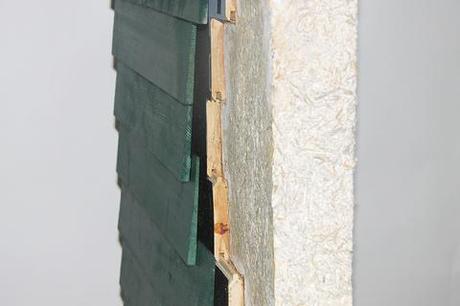
Ecovative's Mushroom Insulation is made from agricultural waste that is bound together with fungal mycelium, a naturally fire-resistant material that obviates the need for toxic flame retardants.
A brick that is “grown” instead of fired in a kiln. Insulation made from mushroom “roots.” Construction panels fashioned from discarded paper and cardboard. A line of paints that are free of toxic chemicals. These sustainable building materials were selected from 144 entrants and announced as winners of the inaugural Cradle to Cradle Product Innovation Challenge at an event in New York City on November 15.
The idea, according to Bridgett Luther, president of the Cradle to Cradle Products Innovation Institute, was to inspire manufacturers of common building materials to rethink the way their products are designed, produced, and used. The winners were chosen, Luther says, because they represent creative ways of promoting healthy, sustainable, and affordable living. “Our biggest hurdle was picking only four winners—we had a number of great products for the affordable housing market,” she says. “All of these winning products are good for the bottom line and the planet.” First-place honors went to bioMASON of North Carolina, which developed a technology that uses bacteria to form a natural cement that binds aggregate into durable bricks. The method has a significantly smaller carbon footprint than conventional kiln-firing, which emits an estimated 800 million tons of carbon dioxide into the atmosphere each year.
Ecovative of Green Island, New York, was awarded second prize for its Mushroom Insulation, which is made from agricultural waste that is bound together with fungal mycelium, a naturally fire-resistant material that obviates the need for toxic flame retardants. And unlike extruded polystyrene, a key component of rigid board insulation, Mushroom Insulation is free of gasses that seep out over time, contributing to climate change. Tied for fourth place were ECOR and ROMA Eco-Sustainable Building Technologies. ECOR, of San Diego, was singled out for its E-Home system of durable construction panels made from discarded paper, cardboard, agricultural fibers, and other so-called cellulose waste fiber, much of which would end up taking up valuable real estate in landfills. ROMA, of Atlanta, was honored for its Domus Mineral Paints, which are made from natural materials and are free of toxic chemicals and asthmagens. The company says a gallon of its mineral paint covers twice the area of a gallon of acrylic paint, reducing waste as well as gasoline use and emissions from transporting it when it leaves the plant.
The winners will share $250,000 in prize money. The competition was sponsored by the Schmidt Family Foundation and the Dutch Postcode Lottery. The jury that selected the winners included executives of Make It Right, the U.S. Green Building Council, Google, First Community Housing, the Honest Company, the Schmidt Family Foundation, Delta Development Group in the Netherlands, and CIGA in China.
